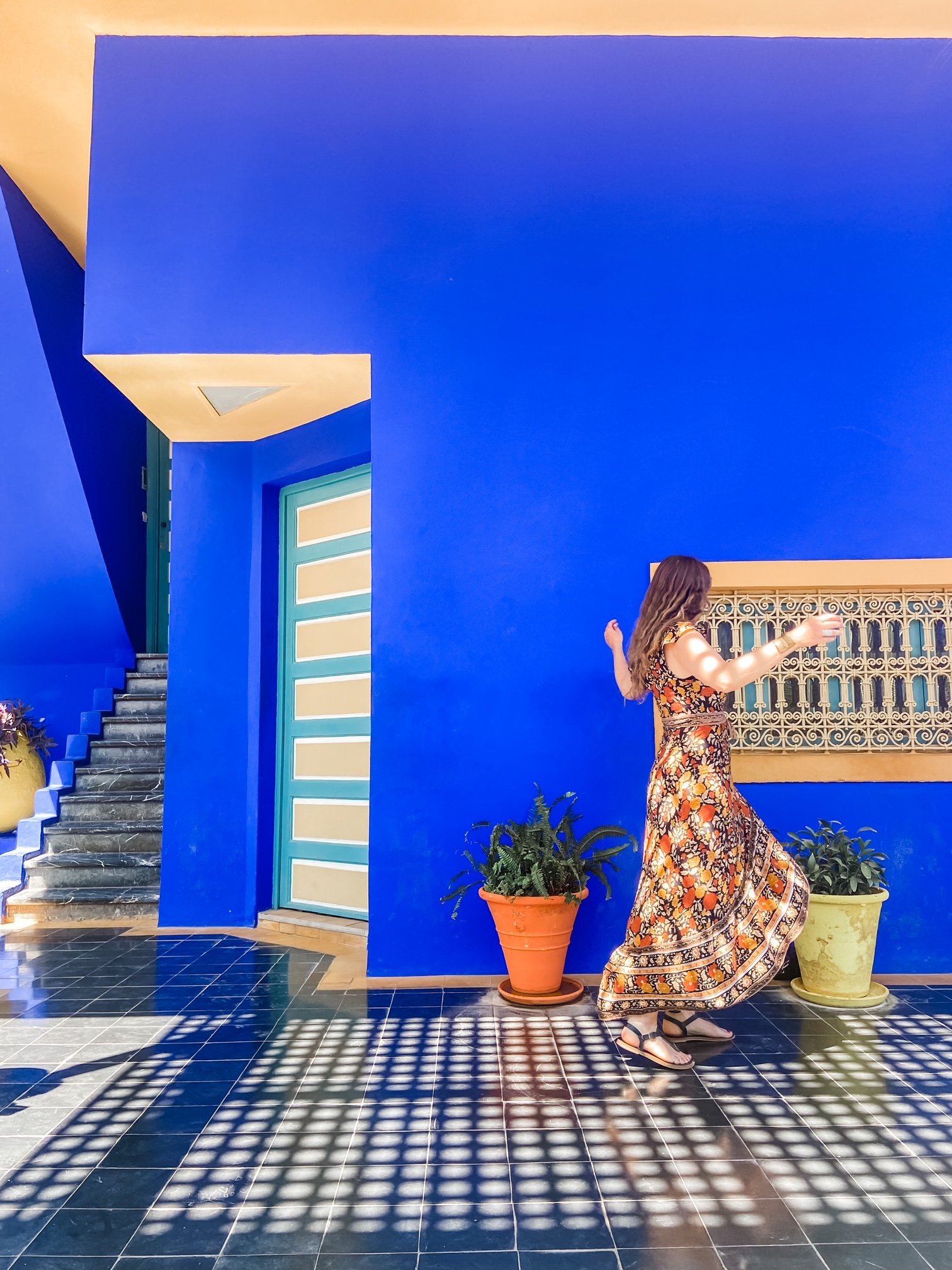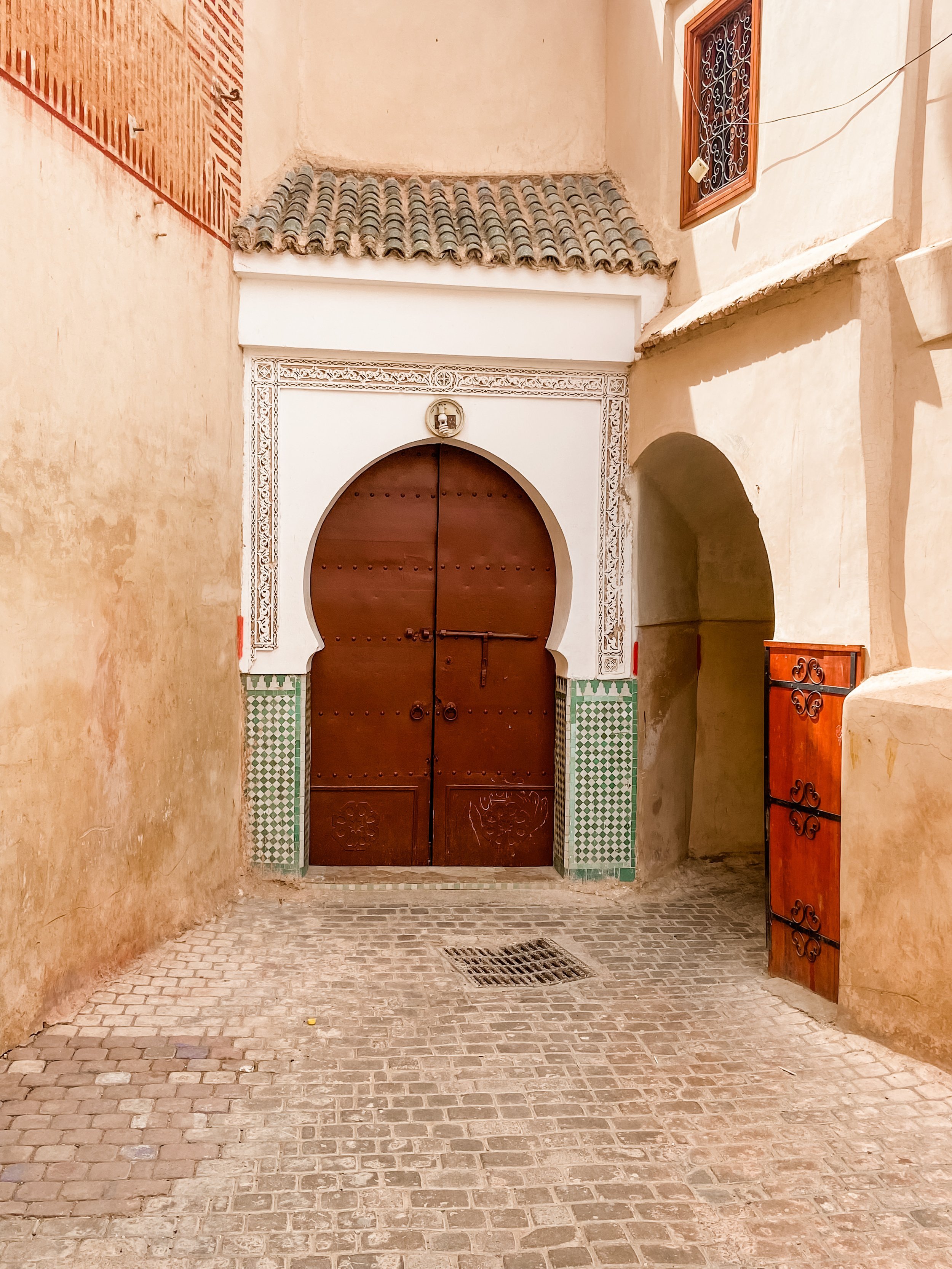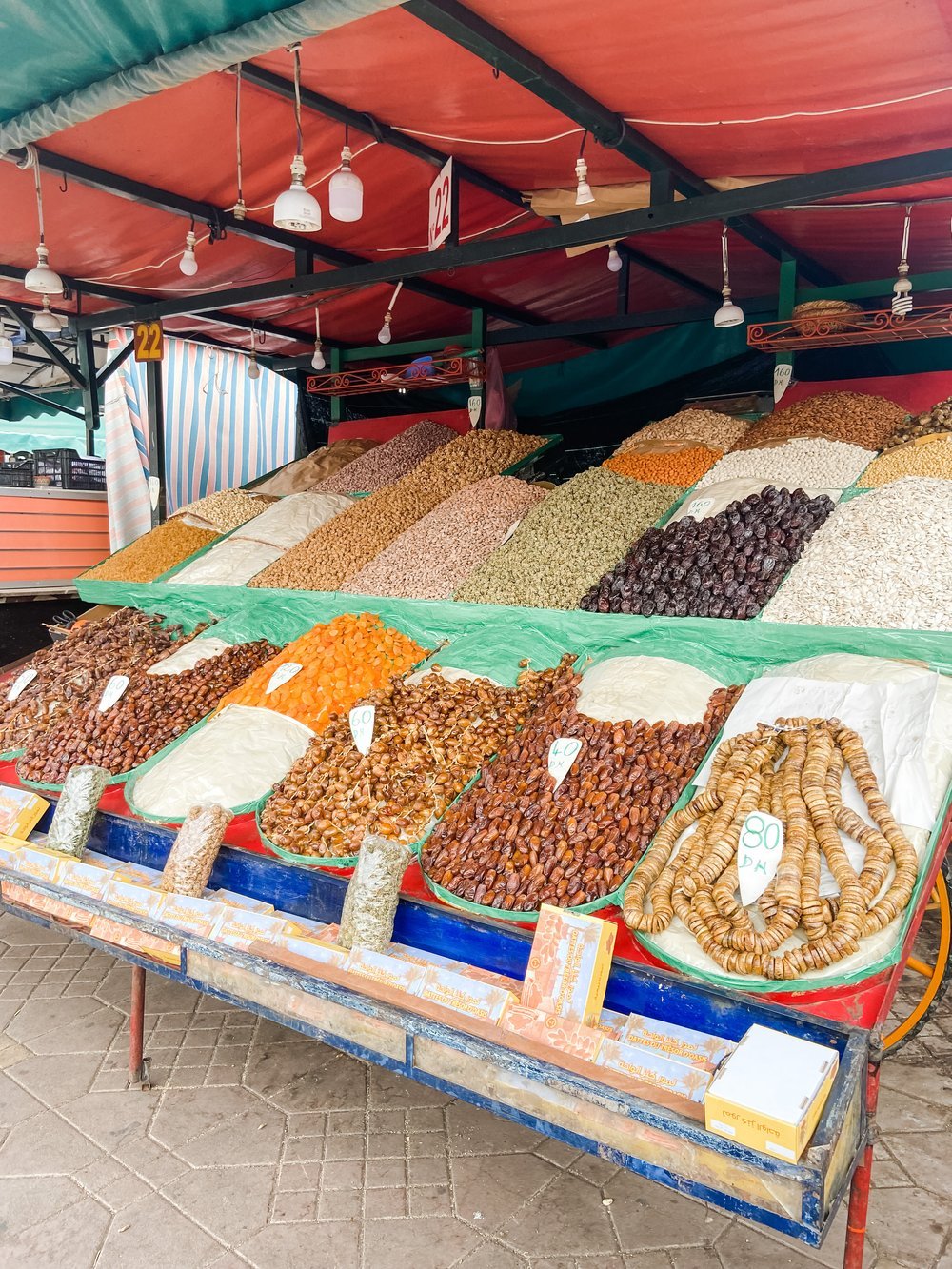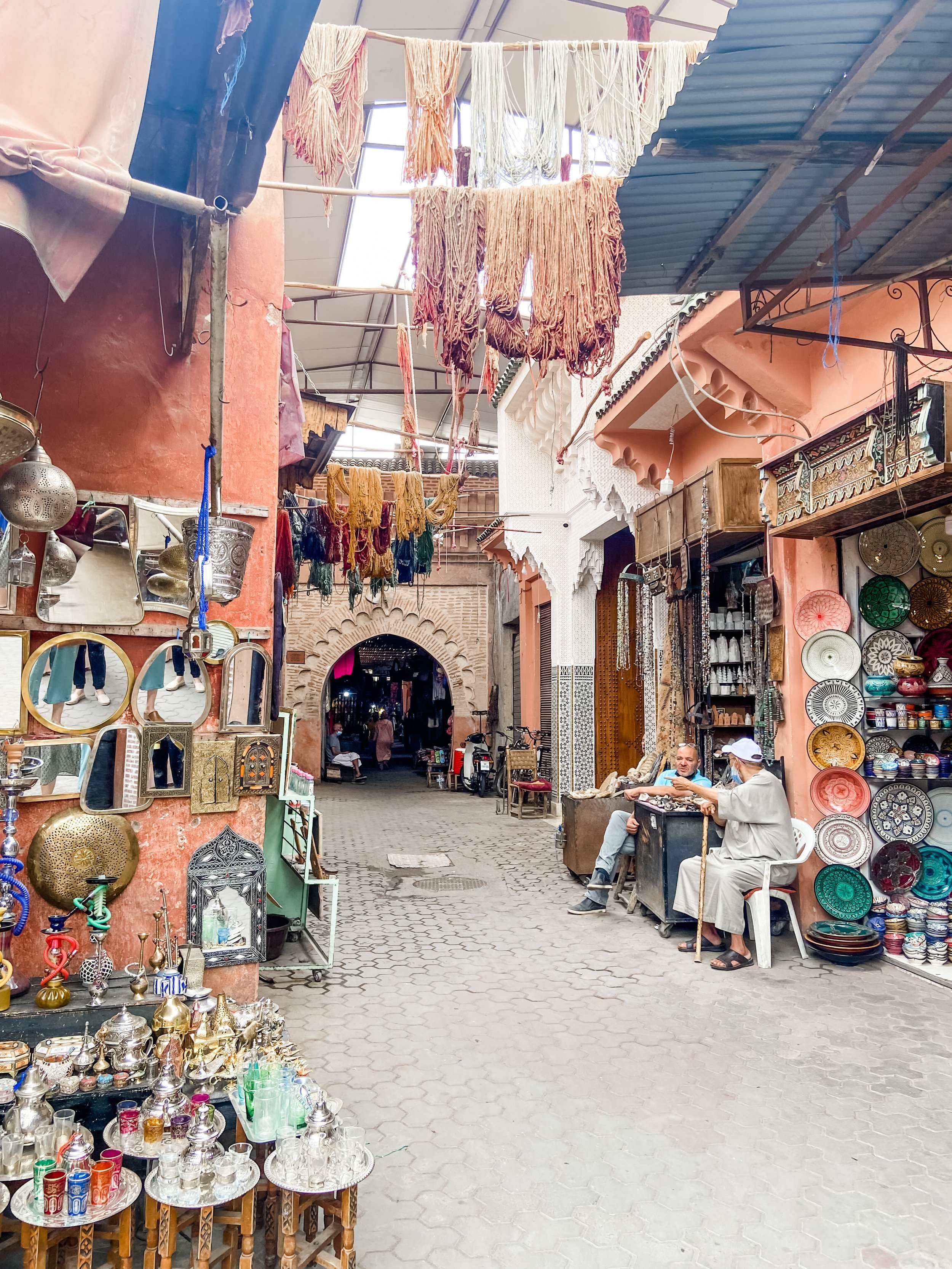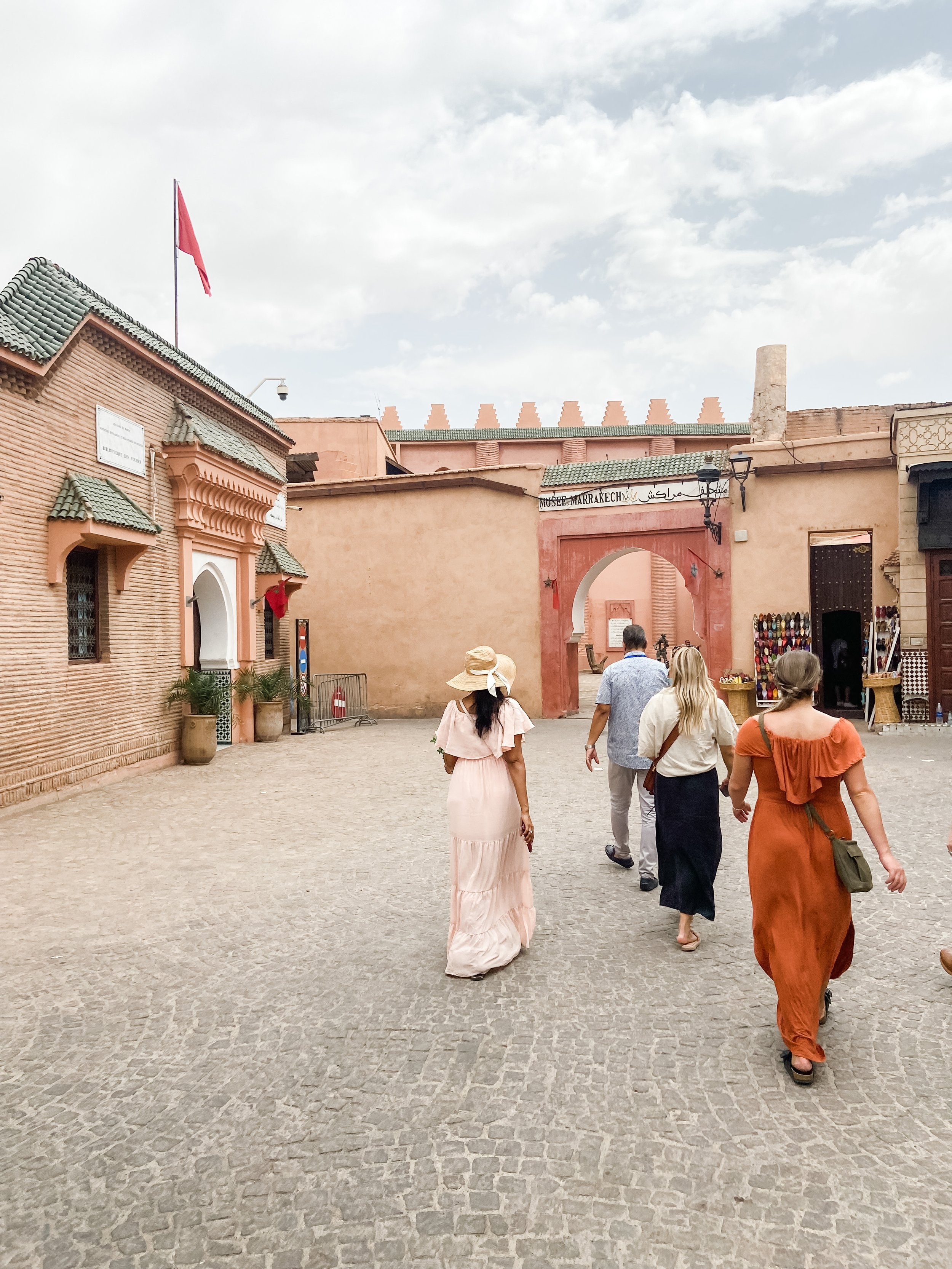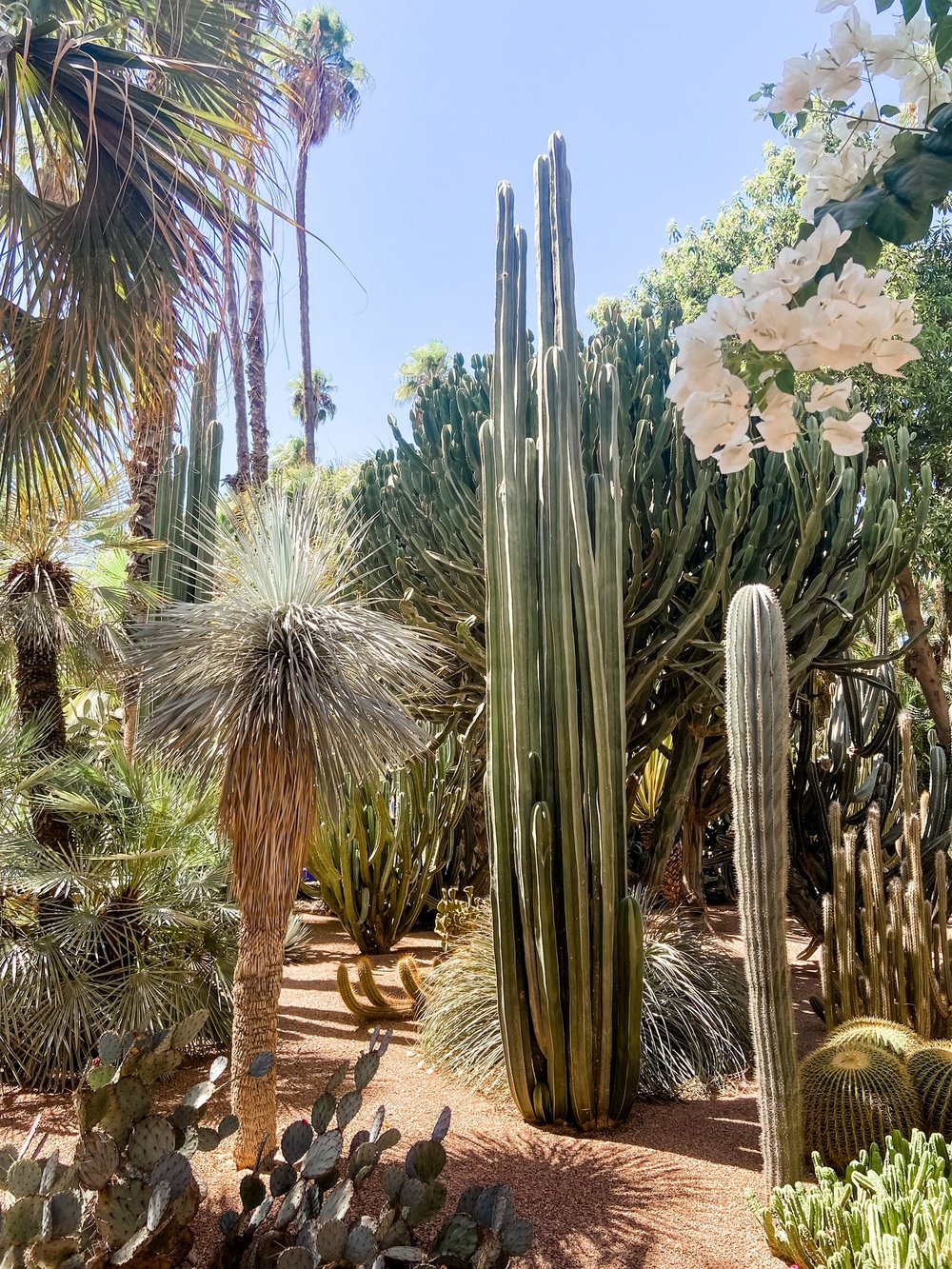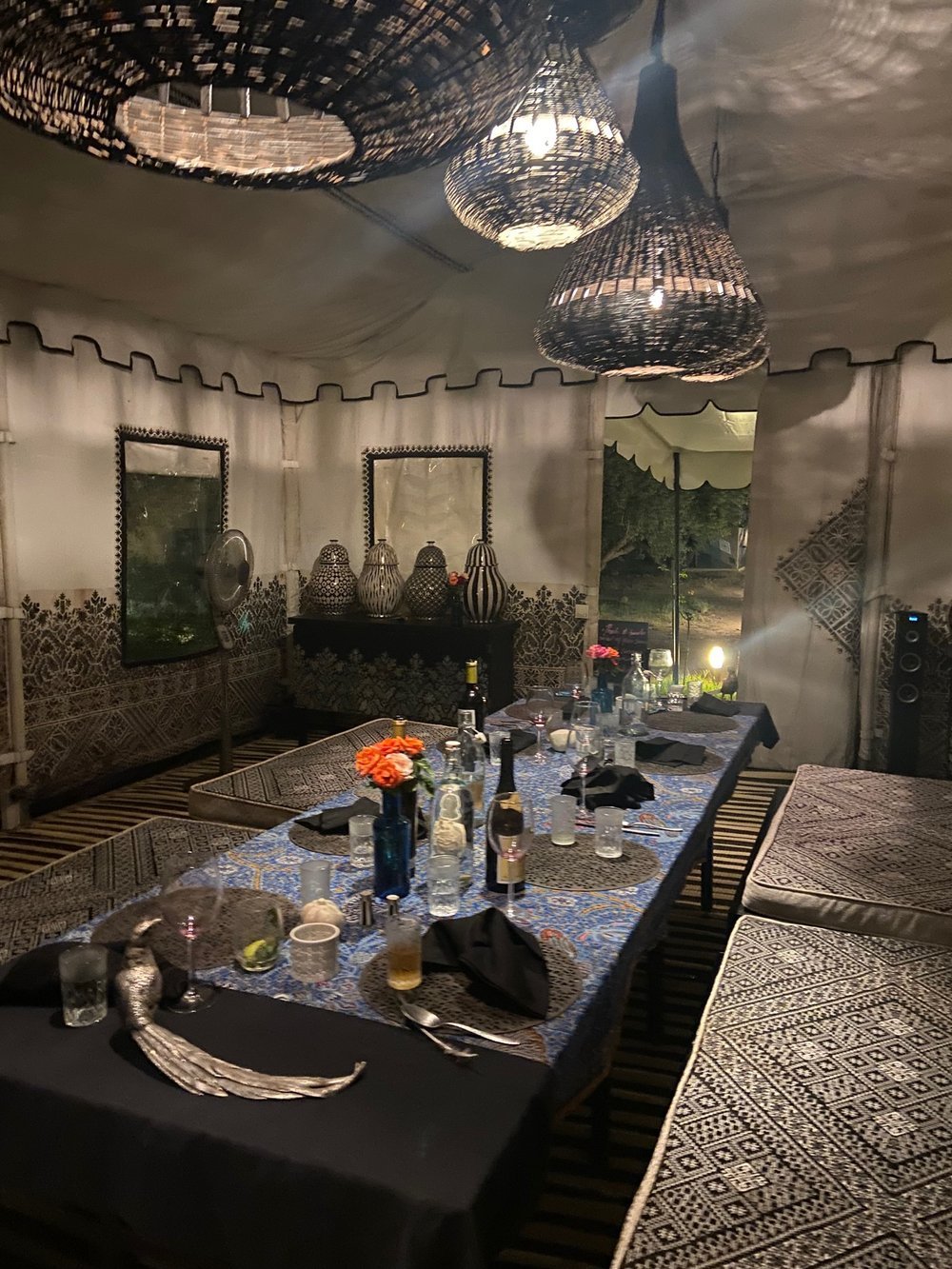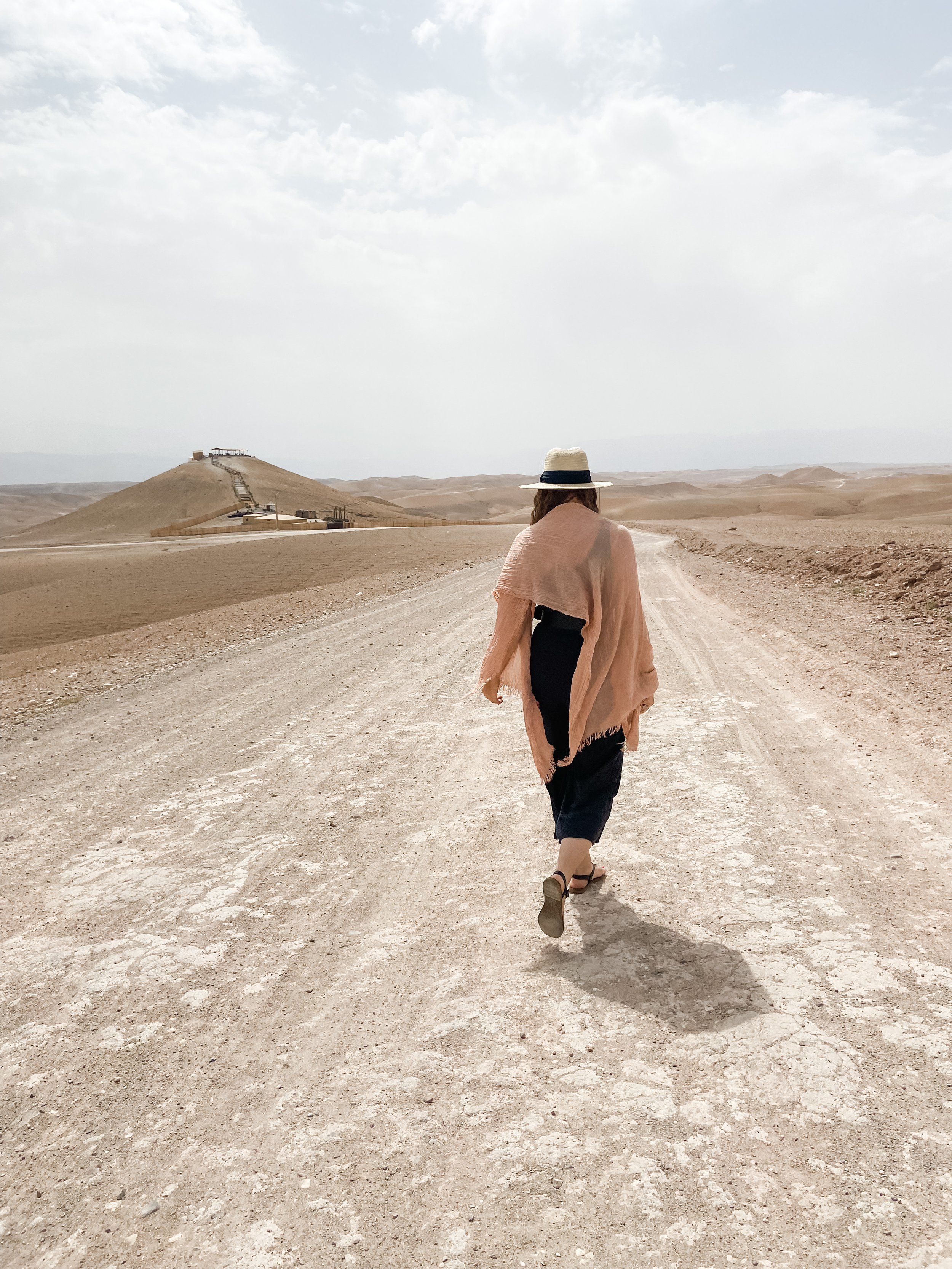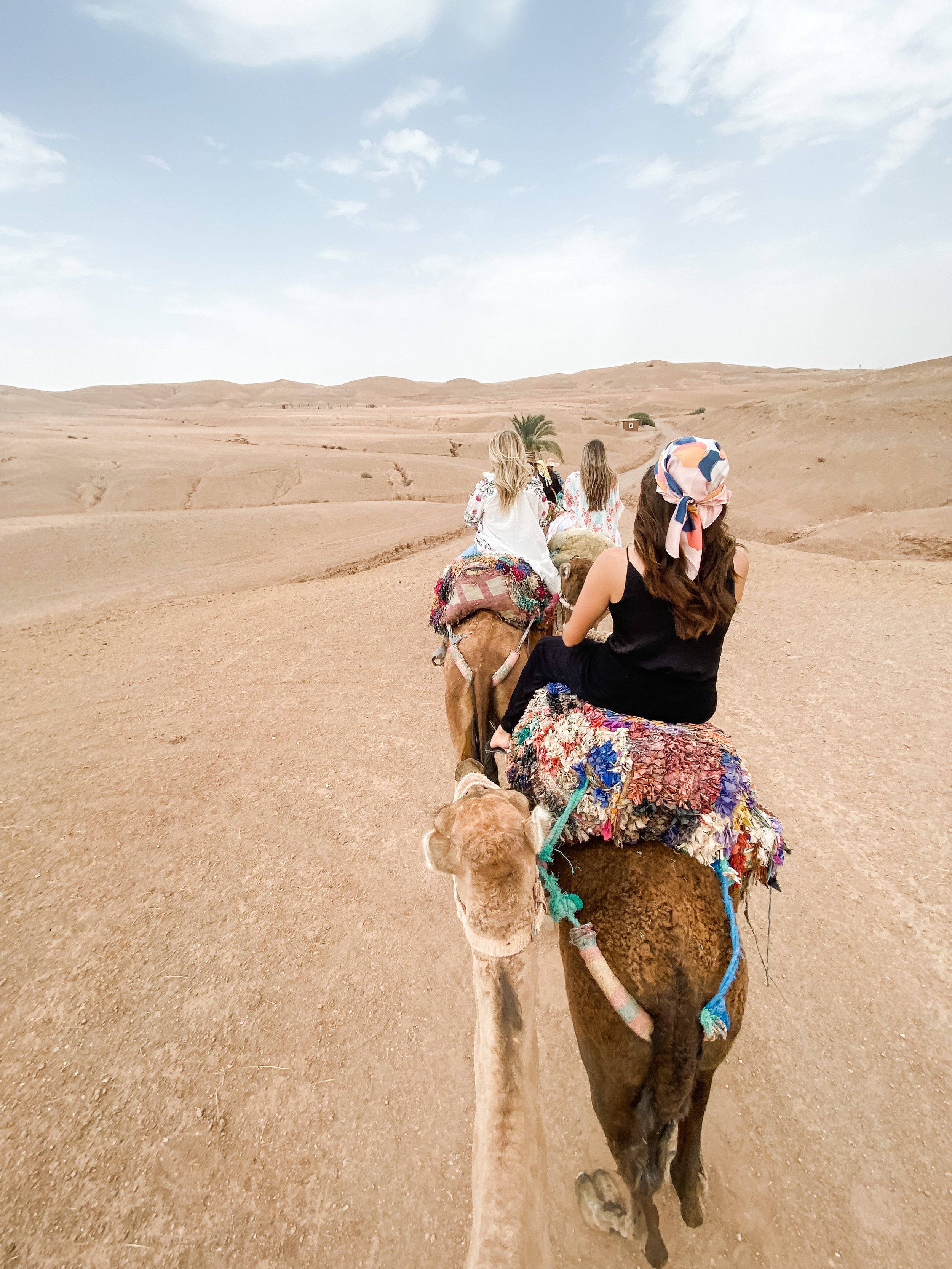We're so happy to share this post from our past guest Kristen Shoates. Kristen’s specialty is helping businesses, entrepreneurs, nonprofits, influencers, makers, artists and organizations of all kinds grow their brands through strategic storytelling. She has a background in journalism and over a decade of experience working as a copywriter and strategist at marketing agencies. Check our her work HERE. Kristen wrote an amazing piece on her adventures in Marrakesh that she graciously shared with us. Read the whole article HERE. Below are her top six highlights from her time with us at Eat Pray Move…
EXPLORE THE MAZE OF THE MEDINA
“Medina” is the term for the old, walled portion of ancient cities, and the Marrakesh medina is a world all its own.
In cities like Marrakesh, it’s common for a home’s ventilation and views of the outdoors to come from above – through an open air courtyard in the middle of the home. For someone walking through the streets of the city, this creates a maze-like atmosphere of narrow, winding, curving streets that dead end, duck under archways and meet at intersections where everything seems to look alike. Though most buildings aren’t tall – and all must be shorter than the Koutoubia mosque minaret – they still seem to tower overhead and insulate you from anywhere that is not here.
In the Red City in particular, where all the buildings are made from pink clay, this maze-like feeling is elevated. Each building’s originality comes from the intricate doors – often with a men’s door and women’s door or men’s lock and women’s lock – that leave you wondering what kind of beauty lies behind the stucco-like walls.
Before you enter the maze, stroll through Jemaa el-Fnaa Square, a wide, open square that feels like the living room of the city, teeming with life. Fruit and juice stands line the walkways, with men holding out samples of their latest squeeze (buying a full-sized drink is worth your dirham – perhaps the freshest fruit juice I’ve ever tasted). Barrels overflow with nuts, dates and spices, and snake charmers, storytellers, henna artists and musicians lure you in. Restaurants with balconies surround the square for a birds-eye view of the action, and as night falls, dining tents and food stalls serving Moroccan street meat pop up all over the square.
Once deeper inside the medina, you’ll find homes, riads (guest houses/hotels), mosques (marked by green tile), restaurants, souks (shops) and all the elements of thriving neighborhood life. Though this doesn’t look like the suburbs you’re probably used to, the medina is not just a tourist attraction: it’s where people live, work, play and worship.
With streets too narrow for most cars, motorbikes are the high-speed transportation of choice, and they buzz through winding alleys at impressive speeds. Most people choose to walk, with vendors pulling heavy hand carts stacked with leather hides, wood or whatever is going to market that day. Women gather around the communal bread ovens, making dough at home and then bringing it out to the streets to bake for tonight’s dinner.
Many people opt to stay in a riad in the medina, which puts the medina’s treasures right outside your front door. You can also book a walking tour through the medina, which can help with the intimidation factor and give you lots of interesting intel on the cultural elements and background of the architecture, history and life of the medina.
When all the sun and navigation becomes too much, head up to the rooftop of a restaurant like Terrasse des épices for a refreshing cocktail and a breeze. Rooftops like this often have a life of their own and give a new perspective on the city as you rise above the web of alleys below.
SHOP THE SOUKS
Some people go to Paris to shop. I go to Marrakesh. I have seriously never shopped so much on a trip – I was running out of dirham, going way over budget and buying (beautiful leather) bags to get all my stuff home. But even if your dream style isn’t bohemian like mine, shopping the souks of the medina is a must-have experience.
The souks are endless rows of shops – mostly stalls with some dedicated buildings – overflowing with artisan goods of every kind: intricately carved metal lanterns, patterned poufs, brightly colored beaded slippers, embroidered caftans, tea glasses in hues of purple and blue and gold, handcrafted jewelry and, of course, the famous Moroccan rugs. You’ll find doors and door knockers and keychains, wedding blankets dotted with sequins to ward off the Evil Eye, tagines and bowls, woven baskets and freshly pressed oils for your skin and hair. When you think of stories from the ancient world about traders exchanging spices and goods from far-off lands, this is what you imagine.
The souks are roughly divided into sections – the leather section, the metal section, the carpet section, the food section where the vendors take their lunch break – but good luck trying to use this to orient yourself. In case the sensory overload of a thousand brightly-colored, intricate designs spilling out of the packed shops into the streets isn’t enough, you won’t be left to shop in peace.
Prepare to be called to and summoned with each shop you pass, a perfectly prepared sales pitch waiting for you if you dare to make eye contact. This can be part of the fun – especially when you literally have the carpet rolled out for you and get to hear the stories of how the rugs are woven in the Atlas Mountains – but it can also be exhausting. Just keep walking if you don’t want to stop and engage.
Bargaining is expected and part of the experience here, so bring your assertive energy with you. Expect vendors to start high when you ask the price; throw out a much lower offer and slowly walk your way up to the middle. Saying you want to look elsewhere and walking away can be a helpful tactic as can bundling multiple items together.
Whether you walk away with enough to furnish a home or just get a small keepsake, the souks are the heartbeat of the city and a great introduction to Moroccan style, where craftsmanship and beauty still abound.
VISIT A HAMMAM
Every culture has its preferred gathering spot – the English have their pubs, the Icelanders have their pools and Moroccans have their hammams…and I’m here for the way self-care is so integrated into the social life of the culture.
Hammams are local bathhouses that offer rejuvenating, cleansing rituals for the mind and body. Though there are private hammams, these are a fixture of public life and considered one of the keys of a neighborhood, alongside bakeries, mosques and schools.
In a heated steam room, you’ll cleanse, scrub and relax. The exact ritual varies slightly by hammam, but you can expect to receive or purchase the traditional black soap and water bowls, change (swimsuits or nothing are the norm) and go through multiple rounds of body scrubs in a heated room, either from a masseuse or self-scrub.
Unfortunately due to COVID, I had to skip the hammam while I was there, but this is a true cultural experience if you have time to visit one. Many hammams have men’s hours and women’s hours, so be sure to check before you go.
SEE THE MODERN SIDE OF THE CITY
Outside the walls of the ancient medina, Marrakesh is a sprawling city with restaurants, boutiques and sites to see.
Jardin Majorelle, the former home of French painter Jacques Majorelle and fashion designer Yves Saint-Laurent, is a popular site with its stunning gardens and signature “Majorelle blue” villa. Inside the house, you’ll find the Berber Museum, which is a small-but-beautiful showcase of Berber clothes, jewelry and artifacts.
Rue Majorelle, the block outside of Jardin Majorelle, is a great place for shopping outside of the souks. Here you will find many of the hallmarks of Moroccan decor – poufs, rugs, those tiny striped tea spoons – along with more modern clothing, bags and jewelry, still with a Moroccan flair. Here, it’s not customary to bargain, so plan to pay the price on the tag (which might or might not be welcome depending on your personality).
You can also enjoy one of Marrakesh’s many luxury hotels, including the stunning La Mamounia – a former palace on the edge of the medina that is every bit as opulent as one would hope. Every element of the design is beyond intricate, with colorful tiles, chiseled archways, velvet decor and immaculate royal gardens. Go for high tea and macaroons, a taste of the French influence that is never far away.
SPEND A NIGHT AT PEACOCK PAVILLIONS
If you want to get out of the hustle and bustle of the medina and experience a desert retreat without leaving Marrakesh, book a stay at Peacock Pavilions, a stunning oasis located on an olive grove in a small village on the outskirts of the city. This design-driven hotel features seven rooms spread across three different buildings, each with their own magical decor that is nothing short of perfection. Sip a pomegranate mojito by the lantern-lit pool, wander the property or shop the well curated treasures in the on-site souk. If you’re lucky, you might even get to experience a showing of Casablanca under the stars.
Peacock Pavilions was my home for the week in Marrakesh, and it made the trip so special. Due to COVID curfews, we ate dinner here every night, and I still never got tired of the amazing food or spending time on the property, where the ambiance changed each day with such thoughtful attention to beauty and detail. Though it’s a bit outside of the city and geared more towards retreats, owners Maryam and Chris are amazing hosts and can help arrange tours, cars and experiences for all types of guests.
GO TO THE DESERT
Even if you don’t have time to venture all the way out to the Sahara, you can still get your fix of desert vibes at one of the outposts on the edge of Marrakesh. The Agafay Desert is located just south of Marrakesh, and here you’ll trade the sandy hills of the Sahara for frozen sand dunes and a moon-like landscape.
When I was there, we visited Scarabeo Camp, a luxury campsite on one of the desert hills. The canvas tents looked like a British explorers’ camp, with glamping tents for sleeping, communal tents for eating and lounging and, somehow, a pool in the middle of the desert. We were just there for a day trip and enjoyed tea, cookies and an incredible meal at the camp, followed by a camel ride through the desert. Yes, it was as dreamy as it sounds!
There are many other luxury camps in the area for a once-in-a-lifetime night under the stars, and there are also more adventurous activities like buggy riding and mountain biking.
Thank you so much Kristen! We have loved getting to hear about your awesome trip and we look forward to hearing more from you here on the blog in the future!
XOXO,
EPM




